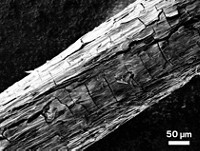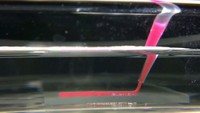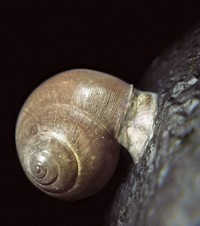Advertisement
Grab your lab coat. Let's get started
Welcome!
Welcome!
Create an account below to get 6 C&EN articles per month, receive newsletters and more - all free.
It seems this is your first time logging in online. Please enter the following information to continue.
As an ACS member you automatically get access to this site. All we need is few more details to create your reading experience.
Not you? Sign in with a different account.
Not you? Sign in with a different account.
ERROR 1
ERROR 1
ERROR 2
ERROR 2
ERROR 2
ERROR 2
ERROR 2
Password and Confirm password must match.
If you have an ACS member number, please enter it here so we can link this account to your membership. (optional)
ERROR 2
ACS values your privacy. By submitting your information, you are gaining access to C&EN and subscribing to our weekly newsletter. We use the information you provide to make your reading experience better, and we will never sell your data to third party members.
Materials
Mussels Meet Geckos
Bioinspired hybrid adhesive holds fast to wet and dry surfaces
by Bethany Halford
July 18, 2007

In an unusual marriage of materials, scientists have combined the sticky structure of gecko feet with the gluey substance the helps mussels adhere to surfaces underwater. The resulting hybrid "geckel" adhesive works well on both wet and dry surfaces and could have medical, industrial, and military applications (Nature 2007, 448, 338).

"I envision that adhesive tapes made out of geckel could be used to replace sutures for wound closure and may also be useful as water-resistant adhesive for bandages and drug-delivery patches. Such a bandage would remain firmly attached to the skin during bathing but would permit easy removal upon healing," says Northwestern University's Phillip B. Messersmith, who developed the geckel tape with Haeshin Lee and Bruce P. Lee.
Geckos are able to scurry along walls and ceilings, thanks to hairlike structures, called setae, on their feet. The tips of the setae branch out into tiny nanoscale projections known as spatulae, which cling to surfaces via van der Waals interactions. Although adhesives that mimic these structures have been made by other researchers, none stick well when wet.
Mussels, on the other hand, employ an adhesive protein that is rich in the catecholic amino acid 3,4-dihydroxy-l-phenylalanine (DOPA) to adhere to wet, slippery surfaces. Synthetic polymers containing DOPA and DOPA derivatives have proven to be similar in stickiness to the natural protein.
Messersmith and colleagues combined these two motifs by coating an array of gecko-mimetic nanoscale pillars with a thin layer of mussel-mimetic polymer. The hybrid material improves wet adhesion 15-fold as compared with uncoated pillar arrays. Furthermore, the geckel tape adheres through 1,000 contact-and-release cycles, sticking strongly in both wet and dry environments.
"This is a really great study," comments Jonathan J. Wilker, an associate chemistry professor at Purdue University who studies mussel adhesion. "They combined the neat, but separate, aspects of mussel and gecko adhesion into one cool material. It's quite a nice example of how fun science can be."
Messersmith notes that the current work is a proof-of-concept demonstration and that it will be necessary to develop a patterning approach that works on a large scale before the material can be used as a practical adhesive. "The challenge will be to scale up the technology and still have the geckel material exhibit adhesive behavior," he says.





Join the conversation
Contact the reporter
Submit a Letter to the Editor for publication
Engage with us on Twitter